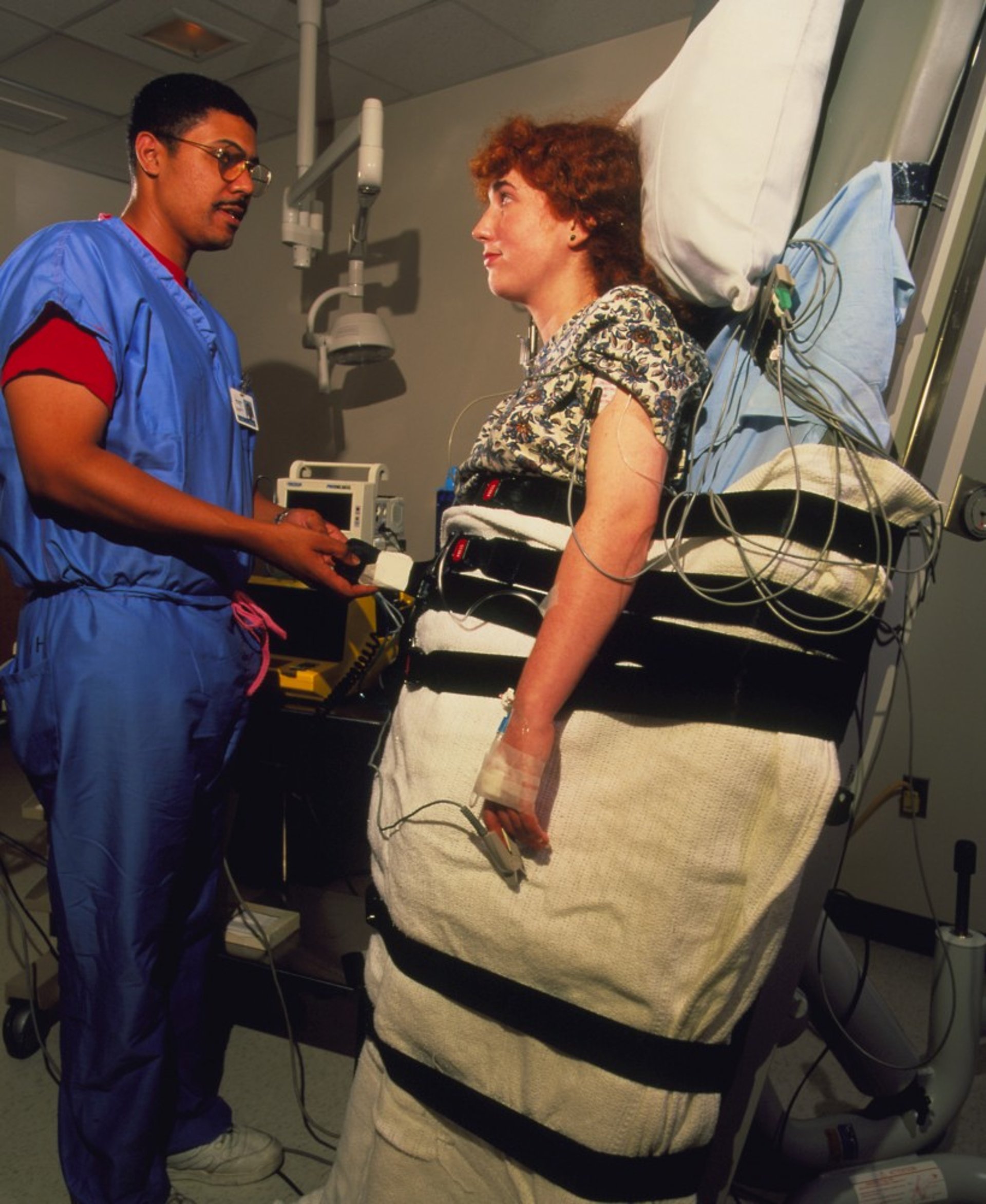- Introduction to Diagnosis of Heart and Blood Vessel Disorders
- Medical History and Physical Examination for Heart and Blood Vessel Disorders
- Electrocardiography
- Continuous Ambulatory Electrocardiography
- Echocardiography and Other Ultrasound Procedures
- X-Rays of the Chest
- Computed Tomography (CT) of the Heart
- Positron Emission Tomography (PET) of the Heart
- Magnetic Resonance Imaging (MRI) of the Heart
- Radionuclide Imaging of the Heart
- Tilt Table Testing
- Electrophysiologic Testing
- Stress Testing
- Central Venous Catheterization
- Pulmonary Artery Catheterization
- Cardiac Catheterization and Coronary Angiography
Tilt table testing is a medical test that measures how being in different positions affects heart rate, heart rhythm, and blood pressure. People with unexplained lightheadedness, dizziness, or fainting may have tilt table testing to diagnose the cause of their symptoms.
Topic Resources
Tilt table testing is usually recommended for people who experience fainting (syncope) for an unknown reason and who do not have a structural heart disorder (such as narrowing of an aortic valve). Tilt table testing is also used to evaluate patients with unexplained lightheadedness or dizziness and recurrent falls. Sometimes tilt table testing is used to distinguish between types of syncope or syncope due to some types of epilepsy.
How tilt table testing is done
AVID PARKER/SCIENCE PHOTO LIBRARY
Typically, people are strapped to a motorized table and remain lying flat for 15 minutes. Then they are tilted head up at a 60° to 80° angle for 45 minutes to see whether they feel faint or their blood pressure and heart rate decrease. If blood pressure does not decrease, isoproterenol (a drug that stimulates the heart) is injected into the person's vein in a dose large enough to accelerate the heart rate by 20 beats per minute, and the test is repeated.

